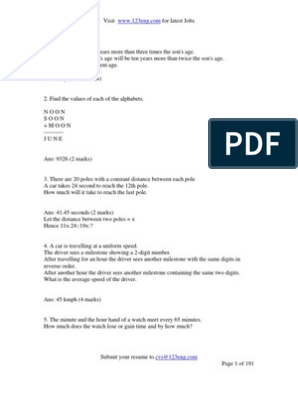0% found this document useful (0 votes)
847 views7 pagesDivisibility Rules With Examples
The document outlines divisibility rules for numbers 1 through 20, as well as for 25, 50, and 100, providing specific criteria and examples for each. It serves as a guide for understanding how to determine if a number is divisible by another. The content is intended for students preparing for competitive examinations in mathematics.
Uploaded by
prakatiCopyright
© © All Rights Reserved
We take content rights seriously. If you suspect this is your content, claim it here.
Available Formats
Download as PDF, TXT or read online on Scribd
0% found this document useful (0 votes)
847 views7 pagesDivisibility Rules With Examples
The document outlines divisibility rules for numbers 1 through 20, as well as for 25, 50, and 100, providing specific criteria and examples for each. It serves as a guide for understanding how to determine if a number is divisible by another. The content is intended for students preparing for competitive examinations in mathematics.
Uploaded by
prakatiCopyright
© © All Rights Reserved
We take content rights seriously. If you suspect this is your content, claim it here.
Available Formats
Download as PDF, TXT or read online on Scribd
/ 7

























































































